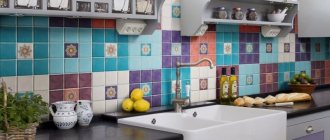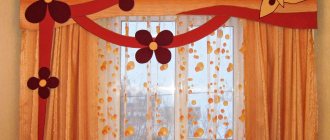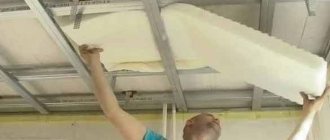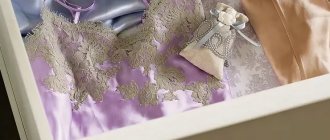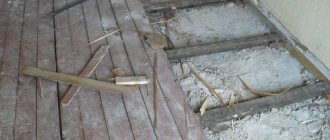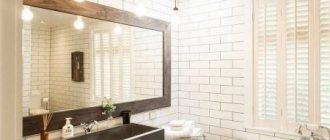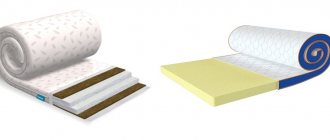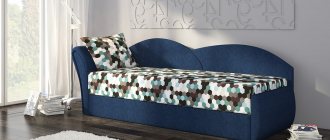Complexity
Working hours
A short digression about the materials that we will need:
1. I buy cardboard at an art store. Typically, for the base of the “playing field” (jars of jam, like here, for example), the cardboard thickness is 1.5 mm. For small parts (like berries here) - 1 mm. If you are not confident in your abilities (or you do not need two huge sheets of thick cardboard), then you can take 1 mm cardboard for all the parts (it is, of course, a little less dense, but for such games it is quite enough). This cardboard is sold in a format of 70 cm * 100 cm (that is, almost Whatman paper). Therefore, if you are going to buy such cardboard, make sure you have transport, or take tailor’s scissors with you, or accept that you will have to carry a stiff piece of paper home :)
I wore it :) Yes, it’s not very comfortable, but it’s quite possible :)
2. I use PVA glue. For working with paper, this is the most convenient option. It’s better, of course, to buy it at a hardware store (since the one sold in office supply departments is usually runny and warps the paper).
3. We will also need lamination film. You can buy a transparent film with an adhesive base, or hot-melt adhesive - it is glued with an iron (this is how our mothers pasted over the covers of our textbooks).
Well, we’ll figure out the rest of the materials along the way :)
So, let's begin! First of all, we glue paper with a printed game onto our thick cardboard. I apply the glue with a construction brush, 5 cm wide - this allows me to do everything quickly, and speed plays an important role here. Apply glue to the desired area, carefully apply the sheet and immediately smooth it with a soft cloth (I use an old terry kitchen towel) so that there are no wrinkles left. After this, we let our beauty dry for about an hour. This is what we get after the first manipulations:
The second step is lamination. I laminate with hot melt film.
We cut our whatman paper into landscape-size sheets, cut the film into the same pieces, lay it with the matte side DOWN, straighten it, cover it with a regular sheet and go over it with an iron several times. Important: before laminating a future toy, try laminating some unnecessary piece to understand what temperature it is better to set on the iron. I laminate at medium power - then the film lays almost without wrinkles. If folds appear, then go over this place with an iron again (also through paper) and then they will almost completely come apart.
This is what we get - almost a mirror shine :) And, at the same time, protection from moisture and scratches :) Put the iron and ironing board aside for a while and take up the scissors again.
First, we chop our sheet into small pieces, then cut it into shape. I don’t try to cut close to the outline - this has a bad effect on the strength and on the nerves of the cutter (we remember that our cardboard is very thick?). We give only a general form.
When everything is cut out, we return to the iron and go through the almost finished products again. This is necessary so that the film does not come off at the edges and grips even better.
So, the finish line! After everything is glued, laminated and cut out, all we have to do is assemble the toy. If you have a toy with clothespins, then take a glue gun and glue the clothespins.
If there is lacing, then we make holes with a hole punch (yes, it takes cardboard of this thickness) and select the lace.
If there is something with magnets, then we glue the magnets. This can be magnetic tape with an adhesive backing, or soft refrigerator magnets and double-sided tape.
Well, if this is a game with Velcro, then we will need Velcro with an adhesive backing.
You can, of course, get by with the usual ones, but in this case, you will need much more patience, effort and time, because this process looks like this:
In this case we use a glue gun. In order for the Velcro to adhere well to the base, we make notches in the places where they are attached and only then apply glue.
That's all - our toy is ready - time to give it to a happy baby and start developing while playing :)
There are many decorative and functional tile suction cups on the market. They look interesting, are inexpensive and greatly simplify the organization of space. The only negative is that if applied incorrectly, the Velcro quickly comes off. In this article we reveal the secrets of reliable attachment of the accessory.
Soft lambrequins: tailoring features
Soft lambrequins look elegant and original, but they are also the most difficult to sew yourself. After all, you will have to make several patterns and calculate the required footage of fabric.
Important
When calculating, it is worth considering that some parts are cut diagonally. If in doubt, it is better to carefully watch the training video first.
A simple way to sew a swag
Beginner seamstresses can try to sew a symmetrical swag of a soft lambrequin with their own hands without a pattern or complex constructions. To do this you need:
- fold the square of fabric diagonally, mark the fold in the middle of the swag;
- hang the fabric on a rail with marks on the width of the middle of the swag and its shoulders, maintaining an angle of 450;
- carefully lay and pin the first fold on both sides, the depth of the “roller” of the fold should be 10-15 cm;
- then form all the folds, maintaining symmetry and the same amount of clearance between them.
Advice
For a better view of the center and ease of operation, a weight can be attached.
- cut off excess fabric, pin the top edge very often along the line of pinning the folds;
- if necessary, the fabric can be unraveled and the contours can be transferred to fake fabric or paper. Using this pattern you can create other swags;
- Treat the bottom with bias tape or another method, and sew curtain tape or Velcro to the top.
Soft lambrequins can consist of one or more swags. In the latter case, they must overlap by at least 1/3.
What is the problem
Fastening household items using suction cups is very convenient and fast, since no additional devices such as a drill or glue are required. Removing the annoying accessory will also be quite simple. Typically, towels in the kitchen and bathroom, soap dishes, hooks for washcloths, small shelves, etc. are placed in this way. Such items weigh a little, but vacuum Velcro does not need to withstand weight.
Why it’s not always possible to attach the suction cup to the tile for a long time
? Almost always the problem is unevenness of the surface. Lumps, cracks and other defects on the tiles weaken the vacuum structure. Uniformity and smoothness of the tiles is the main condition for a strong connection. Try to choose the most suitable areas. The best option is glossy tiles.
Advice
You should not try to glue the suction cup to a textured surface, for example, a tile with a pattern. Matte surfaces are also not the best solution: small pores weaken the suction cup.
Under pressure from heavy objects, the hooks on the suction cups quickly fall off. Correlate the size of the item and its purpose. For example, a large terry towel will be an excessive load for Velcro with a diameter of 1-2 cm.
The shape of the suction cup must also be correct - even and round. The microclimate in the bathroom or kitchen also plays an important role - constantly high humidity. This problem is difficult to fix, but try fixing plumbing leaks and ventilating the room more often.
So, what will determine the strength of the vacuum suction cup?
:
- From the integrity of the material and the presence of defects.
- The relationship between the size of an object and its purpose.
- On the quality of the surface material.
How to attach: instructions
A couple of tricks will help you cope with the task. These are not exactly standard methods of attaching suction cups, but they give long-lasting results.
How to glue Velcro securely, all stages
:
- First, degrease and wash the surface. Remaining dirt significantly reduces the stickiness of the suction cup. To degrease the tile surface, use a regular soap solution. Another way is to wipe with alcohol.
- Degrease the Velcro surface as well.
- If the suction cups come with mugs with a sticky side, do not neglect them: they will make the attachment stronger.
- Place the suction cup on the cleaned wall and apply maximum pressure.
You can attach suction cups to bare tiles, but the result will be short-lived. It is better to make additional mugs yourself or look for them complete with suction cups. To make it yourself, you will need self-adhesive polyethylene film, which is used for office purposes - for laminating paper without heating. Just cut out circles of the appropriate size, stick them on the tiles, and only then attach the hooks.
An easy way to improve the quality of adhesion is to apply an additional layer of Vaseline or a cream of similar consistency to the inside of the suction cup. This substance is safe for various surfaces. The method is used for further placement of light objects on suction cups.
We use sealant
Transparent silicone sealant will be invisible under the hook; it is much more convenient than a drill or a suction cup that constantly comes off. Sealant is a last resort; this method is recommended for future heavy loads on Velcro. It is worth considering that the sealant will not allow you to move the suction cup - it becomes disposable.
How to properly attach a suction cup to a tile using sealant:
- Degrease the surface.
- Select the smoothest area.
- If there are tubercles, they should be scraped off with a sharp knife. Under the Velcro the marks will be invisible.
- Apply sealant to the inside of the suction cup.
- We forcefully press the suction cup into the wall.
- If the glue leaks out, it’s okay: either we remove the remains with a rag, or wait for it to dry and carefully cut it off with a knife.
You can use the suction cup after a day. You need to wait time for the glue to completely harden.
The method is convenient in that it allows you to hang large items on such suction cups - bathrobes, terry towels, etc. Another advantage is relatively easy dismantling: a suction cup with a layer of glue can be easily cut off with a sharp knife. The remaining sealant is cleaned from the tile without damaging it.
Advice
It is important to use sealant for tiles and not glass - it looks unsightly. You can try glue-second instead of sealant, but the safety of the tile is not guaranteed.
Strengthening suction cups is a common practice for experienced housewives. Otherwise, there is no confidence that hooks and shelves will not fall at the most unfortunate moment. Don't limit yourself! Have fun buying decorative fasteners with suction cups: small accents will decorate the room, and the Velcro will hold tightly thanks to simple tricks.
We have also collected some interesting sewing tricks for us who sew. It turns out that sewing a hook neatly is not at all difficult. You just need to take the right thread.
But in this way you can easily lay out the folds. And I somehow struggled with the insertion into the blouse, several times I hemmed it and stitched it again in places so that there were even folds.
We laid the folds evenly, now, so that they do not run away, we squeak them with masking tape, and we will sew (if necessary) along the transverse clearings, between the strips of tape. Well, how simple!
This is very useful advice. Those fabrics that are difficult to sew and thick seams are much easier to sew through a piece of bag; the needle glides better than on tracing paper. You just need a transparent package.
But delicate fabrics, on which the foot does not slip, are easier to sew by gluing pieces of tape onto the foot. The painting again is removed without leaving a trace.
An easy way to always keep thread scissors handy. We glue the plastic hook in a convenient place on the machine (such hooks are already sold with an adhesive layer)
Glue a couple of magnets to the back of the saucer to keep the pins from falling apart.
Interesting pocket
Correct pocket: exact location (1″ = 2.54 cm), the rest is easy to calculate
How to sew Velcro
- When we cut, we try to do it without touching the hooks and loops that make up the Velcro. Cut to exactly the right size
- Let's now match the hooks and loops in several places - for stability
- We set the thread tension for medium or heavy weight fabrics.
- Let's make sure that the needle in the machine is sharp and super strong and lubricate it with lubricant.
- If there is one, we will replace the foot with a special one. If there is no such foot, we point the needle to the left or to the right - depending on the side that we are sewing and sew exactly along the edge.
- You can use beeswax to lubricate the needle.
- Never use Velcro that has an adhesive side; it will only make sewing more difficult and smear the needle.
A tricky way to make a beautiful frill right away on a sewing machine
Pockets
There are many methods used to attach curtains. Among them are Velcro, with which you can install curtains made of various materials.
Velcro curtains are convenient and practical primarily because they do not require holes drilled in plastic or wood
Strengthening the cornice is a simple operation, and there are several known ways to carry it out, including:
- on ties and braid;
- drawstring and loops;
- grommets;
- hooks, clips and clothespins;
- Velcro.
The latter, according to many, is the simplest. This does not require special knowledge, large expenditures of money or time.
Velcro curtains, description, fastening features, design options
Velcro - that's what it's officially called - has proven its effectiveness. With its help, you can install curtains without cornices on plastic and wooden windows. They are especially convenient to use in small rooms, where the cornice may look bulky, and a curtain that does not fit closely to the wall makes the room visually even smaller.
Using Velcro for small windows allows you to get rid of bulky curtain rods
What is Velcro
This type of fastening is used quite widely: in the manufacture of garments, shoes, accessories and other goods. It consists of two tape elements: on one there are microhooks, and on the other there are the same small loops. When both tapes touch, the hooks cling to the loops, sticking tightly to each other.
Self-adhesive Velcro tape or Velcro
Product advantages
The convenience of Velcro is that they can be mounted on windows even if there is no cornice, which saves space and money. Other advantages include:
- long service life and preservation of technical characteristics;
- ease of installation and maintenance: they are easy to remove, wash, dry and iron.
- Velcro curtains can be used for any interior and style direction.
Velcro fastening to a plastic window does not violate the integrity of the window
How to sew a rigid lambrequin
The technology for sewing rigid lambrequins has been simplified with the advent of a new self-adhesive material - thermoband. Now you can create perfect, spectacular decorations for curtains with your own hands using simple patterns and, if necessary, video tutorials.
Calculating the material for a rigid lambrequin is very simple: seam allowances should be added to the length of the cornice and the height of the finished decoration.
Important
When calculating the required footage, you need to take into account the direction of the pattern or the texture of the fabric. Smooth, shiny materials can give different visual effects when cut lengthwise and crosswise.
To properly sew such a product, you should follow these steps step by step:
- apply the pattern to the thermoband and cut along the contour (without allowances);
- cut out the same element on the fabric, but with added allowances;
- using a steam generator or an iron with steam, glue the fabric to the base;
Advice
It is better to start gluing from the middle of the product so that the pattern does not warp
- the edges should be treated with decorative braid or bias tape;
- On the reverse side, carefully attach a Velcro tape, which will hold the finished lambrequin on the cornice.
How to install curtains on a window without drilling
Traditionally, to hang a curtain, you first need to install the curtain rod by first drilling holes in the wall. Then install the holders for it and secure them securely.
Fastening individual sheets of Japanese curtains with Velcro
However, many novice home craftsmen are interested in how to attach a curtain to a plastic window, but avoid drilling. This can be done by taking advantage of the Velcro fastening options for curtains. This fastening method can be used when installing:
Curtains with Velcro loops are similar to regular curtains; to remove them, just undo the Velcro
Installing curtains with Velcro yourself
Before you start decorating the curtain with Velcro, you need to decide where to attach it: to a wall, a plastic or wooden window, and then:
- cut a strip of fabric from 5 to 12 cm wide, depending on the purpose and density of the curtain;
We take measurements of the window with allowance for Velcro and seams at the top and bottomWe cut out the curtains according to size, fold the sides of the curtain, then the bottom of the curtain using the soft part of the Velcro on the wrong side
For each curtain we sew 4 ties from the same or a different fabric
- fold it in half and stretch it along the entire upper edge, right side out, iron;
To the top of the curtain from the front side, pin soft Velcro, measure 7 cm from the edge of the curtain, place one tie under the Velcro from below, stitchWe bend the Velcro to the wrong side and sew it, adding 1 more tie.
- sew on the soft part of Velcro (you will need tape without an adhesive layer);
We glue the hard part of the Velcro to the wall and fasten our curtain - fold the fabric along the seam and stitch as close to the Velcro as possible.
You can use the ties to lower and raise the curtains
After this, the front side of the fabric is covered with a strip, which also needs to be sewn.
The rigid part of the fastener is attached to the cornice and glued.
To fix the bottom of the curtain, use rigid Velcro along the edges
Attention! If the curtain is light and is intended to be installed on a plastic window, additional use of adhesive mass will not be required.
How to hang a Roman blind without drilling
The nuances of securing a Roman blind with Velcro
For a long time, one of the most popular types of curtains has been the so-called Roman blinds. Today they are flat sheets of fabric with which you can quickly and beautifully decorate a room. At the same time, another advantage of these products is their style versatility: they fit perfectly into any interior.
On the wrong side of the fabric, using chalk or a piece of dry soap, mark the installation locations of the rings, fold lines and hems
They are usually mounted on cornices; To do this, drill holes into which fasteners are inserted and secured. However, today, in order to hang a curtain of this type, it is not necessary to drill out the wall - you can use Velcro adhesive tape.
We process the side edges and the top cut of the fabric, sew Velcro to the top cut, onto which the curtain will be attached
For this, in addition to the fabric itself, you will need:
- Velcro (soft part);
- strips made of plastic or metal that will imitate a cornice;
- a weight bar, which is strengthened along the bottom of the product;
- an even number of curtain rings.
Installing a wooden beam on the window frame
Using nails or a furniture stapler, attach Velcro to the bottom of the wooden beam
The work is performed as described in the previous section. In addition, original pockets are sewn on the inside, into which a “cornice” is inserted on top, and a weight at the bottom.
We fold the lower part of the curtain to form a place for the weight strip, sew a finishing border along the wrong side of the curtain, insert slats into the resulting “pockets”
A cord is pulled through the rings fixed at the level of the pockets, and the entire structure is attached with the hard side of the Velcro to a plastic or wooden base.
We sew on the rings, use Velcro to secure the curtain to a wooden beam, then thread the cord to the top edge of the curtain through all the rings, secure the cords using ribbons
We remove the ribbons that secured the folds; when the curtain falls, we equalize the tension of all the cords, the installation of the curtain is completed
Additional Information. Weighting the bottom of the product allows you to keep the surface from folds and creases.
How to hang tulle on a window with Velcro
Without complications and the use of drilling tools, you can fasten a light muslin curtain or tulle with Velcro to a plastic or wooden curtain rod using this type of fastening.
The main condition for fastening with Velcro is that the fabric should not be heavy
Curtains with lambrequin for the hall and more
Have you ever dreamed of living in a palace?
It turns out that to turn your apartment into a palace interior, all you need to do is hang curtains with draperies called lambrequins. Of course, you will also need furniture and accessories that match the style, but pompous curtains with lambrequins are the main attribute. In modern classic interiors, lambrequins are used quite often and have not gone out of fashion for many years. They are also perfect for interiors in Baroque, Rococo, Renaissance or Empire style.
The lambrequin itself is an expressive textile element that complements classic curtains. There are a lot of styles and options for lambrequins, so before buying or ordering curtains with lambrequins, you should definitely learn a few new words.
Loggia or balcony: how to attach curtains with Velcro
Today it is customary to use a balcony or loggia as a living space, which often turns into another makeshift room. In addition to other fastening methods, loggia curtains can be installed with Velcro.
Velcro curtains are often used to cover windows on balconies and loggias.
However, their use requires compliance with additional conditions that will ensure the strength and reliability of the curtains.
Do-it-yourself Velcro curtains for the balcony have a certain difficulty in installation, since the windows installed here reach the very top, and they can be strengthened with great difficulty. It is impossible to install a cornice, curtains on nails are not aesthetically pleasing, and the most effective and aesthetic way would be to use Velcro.
An excellent option is to use Roman blinds. They have a number of advantages:
- do not interfere with opening windows;
- do not flutter from gusts of wind;
- do not require significant material costs;
- used in various colors.
The best choice for balcony curtains would be tulle, muslin, organza, silk, cambric, curtain fabric.
The fabric can be attached to a block with Velcro, then installed on the window frame and secured with fasteners.
Adhesive tape is attached to the wooden slats using glue or a stapler, and the slats are attached to the wall with self-tapping screws
Design options for balconies and loggias can be found on websites where color photos are posted.
Suction cups for curtains, scope of application and installation
Another way to attach curtains is to use suction cups. Most often, they are used to secure curtains in the bathroom, shower, or combined toilet. It has its advantages:
- simplicity;
- cheapness;
- saving time;
- no need to drill into walls.
However, such products are not always pleasing: after a short period of use they lose strength and fall along with the curtains.
When purchasing, you need to pay attention to the integrity and smoothness of the surface of the suction cup. If they are broken, then the period of use will be short.
But even absolutely high-quality products will not adhere tightly if the wall has defects: potholes, cracks, remnants of the previous coating. It will be difficult to strengthen them on the embossed surface of the facing tiles.
To securely fasten them, you must use:
- degreasing agents;
- petroleum jelly and petroleum jelly-based preparations;
- lining made of self-adhesive PVC film;
- silicone sealant.
Video: We sew curtains on loops with Velcro.
Lambrequin is an element of decorative finishing, drapery, which is used to decorate the upper part of window and door openings, and alcoves. This accessory is used to add coziness and elegance to the interior. It elegantly frames the window, creating a complete look. In addition, a lambrequin is often used to disguise an old cornice or mounting tape on which curtains are attached. Depending on the width and length, it can make the window visually taller or narrower.
There are several types of such decorations:
- swag (a traditional type, which is a semicircle draped with clear folds, cut along an oblique thread);
- bandeau (lambrequin on a rigid base, the characteristic feature of which is that it completely covers the cornice);
- throw (a panel that can be draped freely by simply throwing it over the bar).
It is worth noting this type of drapery as frill - a soft tapestry with folds, giving the window a more formal and elegant look.
Sewing a simple lambrequin
Sewing a simple lambrequin yourself will not be difficult even for a novice craftswoman. First you need to choose a style; if you wish, you can watch several different videos on the topic and then choose the most interesting solution. A folded lambrequin looks interesting and elegant.
The next important step in sewing lambrequins with your own hands is to calculate the required amount of fabric. To correctly determine the footage, you need to know:
- width of the material - allowances for processing should be added to the height of the finished product;
- cut length - the length of the cornice multiplied by the assembly factor, plus the amount of allowance. The coefficient is taken to be 1.5 (for a slightly gathered option) or 2.5 or more (if a large number of folds are needed).
Next, the required strip is cut out.
Important
If the lambrequin and curtains have a pattern, then when cutting you should take into account its direction.
A ribbon is sewn on top of the future decor, and all edges are processed. The folds are gathered evenly - and the product is ready to take its place on the cornice.
Pattern for a rigid lambrequin
